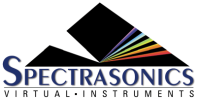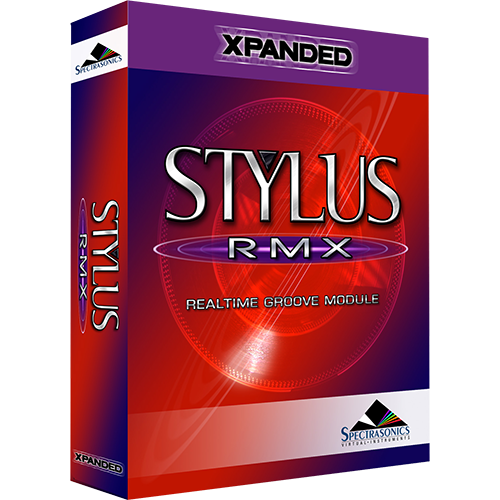CPU usage is dependent on your computer’s speed and memory. SAGE is a flexible and open system which allows you to freely add FX and more editing power based on the needs of what you want to create. Switching from one Multi or Kit to another can require radically different amounts of your computer’s resources. Standard use of RMX runs fine on even modest computer systems, but fully maxing out Stylus RMX’s potential to use up to 39 high-powered FX units, 128 Power Filters and multiple Sound Menus simultaneously can be tough for even the most powerful, currently-available computers to handle. Conserving computer power and learning how to keep RMX running efficiently is essential info for all Users.
There are several ways to conserve power in Stylus RMX. The following tips and techniques are especially useful in busy sessions when trying to make the most of CPU power and RAM usage:
CPU USAGE
- Aux Sends
If you are not using the AUX Sends on the Mixer Page, make sure ALL of them are OFF (fully counter-clockwise) so the AUX system is disengaged to save CPU power. If even one Aux knob is turned up, the Aux system on all Racks and Parts is engaged—even if no audio is passing through it.
- Bypass Unused FX
Bypassing FX Units saves CPU power. When Bypassed, the FX Unit does not consume CPU power.
- Power Filter vs. Master Filter
On the Edit Page, the Power Filter is a great sounding filter, but consumes significant power (that’s why it sounds so good!). The Master Filter is also a very good sounding filter, but requires MUCH less power to run. If you are performing simple filtering tasks, try the Master Filter; it has a good sound and is much lighter on the CPU.
- Power Filter FX vs. Valve Radio FX
If you are in need of a basic Filtering effect as part of an FX Rack, it’s much more efficient to use the Valve Radio as a filter, than to use the Power Filter.
- Aux FX vs. Insert FX
When using FX like reverbs, it’s usually better to place the reverb in an Aux Rack, instead of using it as an Insert. Often there are several sounds that need reverb, so instead of placing multiple reverbs on individual Inserts, you can place one reverb in an Aux Rack and use the Aux Sends to send them all to a single Aux Rack for reverb. This is far more efficient on the CPU.
- Remember that Creating New Edit Groups Copies All FX/Filters too!
When creating a new Edit Group, it’s essential to keep in mind that the newly created Edit Group copies all the FX Inserts from the “Main” Edit Group. So, if you have Wah-Wah and PRO-Verb FX Units on “Main,” the new Edit Group will also have another Wah-Wah and PRO-Verb rack inserted along with any other Edit Groups created for that Part. If you create a lot of Edit Groups, this FX copying can lead to a massive amount of CPU usage. The same principle is true for the Power Filter on the Edit Page.
- EZ-Verb vs. PRO-Verb
Contrary to what you might think, EZ-Verb doesn’t necessarily use less CPU power than PRO-Verb. This is because PRO-Verb has a variable CPU Power parameter, where EZ-Verb’s CPU Power is fixed. This parameter changes the number of reflections in the reverb signal, and a higher setting is not always a “better” sound and more reflections require a higher amount of power. Sometimes lower CPU settings can produce a more desirable result. If PRO-verb is set to maximum CPU, it takes much more power than EZ-Verb, while lower PRO Verb CPU settings (like the default settings) can actually require less power than EZ-Verb.
NOTE: When using PRO-Verb, remember that the CPU usage changes with every Patch you load, and the results can be quite different.
MEMORY USAGE
Stylus RMX loads all Elements into your computer’s memory for playback. As with all applications that use RAM, we recommend getting as much as you can.
Since memory is shared with your host application, operating system, and other open applications and plug-ins, it’s good to know how Stylus RMX handles memory, so you can optimize your use of it.
- Slice Menu MIDI Mode vs. Groove Menu MIDI Mode
Stay in Slice Menu MIDI Mode if you’re not using an entire Suite of Grooves. In Slice Menu Mode, Stylus RMX only loads the selected Element and the Element below it in the menu. In Groove Menu Mode, Stylus RMX loads ALL the Elements of a Suite into RAM. This can be very demanding on RAM if several Parts are in Groove Menu Mode and the Suites are large.
- Multiple Sound Menus
Remember that even if you are using a sound menu only for a single hit, the whole Sound Menu element is still loaded into RAM. Some sound menus like the Cymbals and Cinematic categories take a lot of RAM, because they contain many long stereo files in a single element. If you are running out of RAM, you can render/bounce some sound menu elements to audio to free up your RAM again.
- Multiple Groove Menus
It’s possible to have core library Groove Menus that include up to 60 Groove elements per part. In Groove Menu MIDI Mode, each of these Groove Menus loads all of the Groove Elements into memory for instantaneous access and simultaneous playing. So it’s possible to load up to 480 Grooves into a single RMX instance for simultaneous playback. Obviously, this will use a huge about of RAM, so be aware that Groove Menus are very memory hungry.



